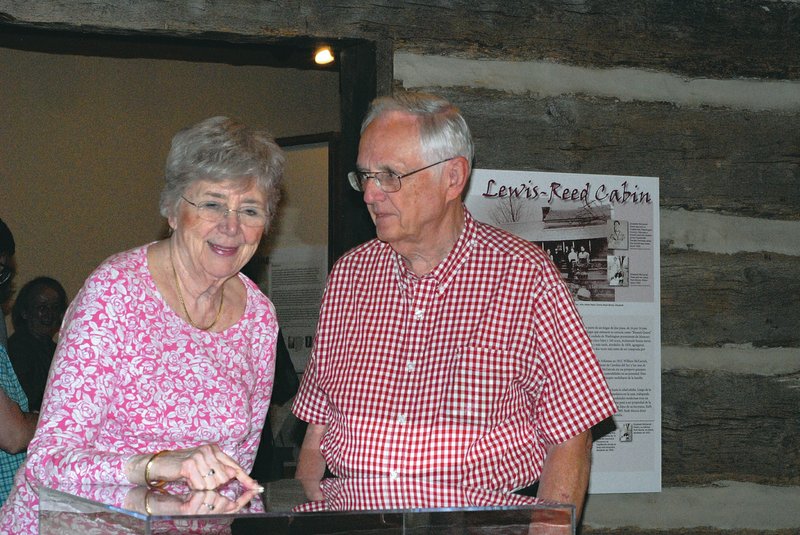The Shiloh Museum of Ozark History, which was started with a collection of arrowheads in the former library building on Springdale's West Johnson Avenue in 1968, celebrated the opening of "Settling the Ozarks" at a reception April 30. The new permanent exhibit, which is focused on the 1841 Lewis-Reed cabin, is part of a renovation marking the museum's 50th anniversary in 2018.
Marie Demeroukas, the museum's research librarian and photo archivist, was the curator of the exhibit. Exhibits manager Curtis Morris created the exhibit's fixtures.
Shiloh Museum
Exhibit Reception
What: A celebration of a new permanent exhibit, “Settling the Ozarks”
When: April 30
Where: Shiloh Museum of Ozark History in Springdale
Next: Local historian and author Denele Campbell will present “The Back-to-the-Land Movement: Ozark History and Memories,” at noon June 17 as part of the Sandwiched In series.
Information: (479) 750-8165
"I had done a photo exhibit on settling the Ozarks, so I waited about 5 seconds to volunteer," Demeroukas said. "The way the exhibit had been was mostly family items from Elizabeth McGarrah Reed, who lived in the cabin the longest, and those ranged from pre-Civil War to the 1970s. In terms of trying to tell the story of the settlers from the 1820s to 1860, some of those materials obviously had to go into storage."
Visitors to the reception oohed and ahhed over 150 artifacts that came out of the museum's archives, augmented with about 75 items on loan from the University Museum collections in Fayetteville, one unusual eBay purchase -- a razorback hog like the ones living in this area when settlers arrived -- and about 50 or so props "that we made or collected or someone kindly made for us," Demeroukas said.
All the documentation for the new exhibit is written in both English and Spanish.
"To me it's a no-brainer," said Allyn Lord, the museum's director. "We've not provided that service regularly in the past, although we have had a few translated written materials and the Spanish audioguides. But with something like 35 percent of the Springdale population being Latino and a significant percentage for all of Northwest Arkansas, even though some of those folks speak and read English, it's not only a disservice to our community NOT to have translated labels, but actually an abrogation of our responsibility to those we serve."
Guests were also invited to wander the grounds, where refreshments were served and they could view the museum's outbuildings, which include the Searcy House, built in the 1870s by Archibald Smith, a minister at the Shiloh Primitive Baptist Church (today's Shiloh Meeting Hall); the Ritter-McDonald Log Cabin, which was built in the 1850s at Elm Springs; Dr. John C. Carter's Office, built in the 1880s on the Middle Fork of the White River in south Washington County; the Steele General Store, built south of the present-day Shiloh Museum in the 1870s by John Bell Steele; and the Cooper Barn, built in the 1930s by Victor Cooper on his small farm north of Springdale.
Becca Martin can be reached by email at [email protected].
NAN Profiles on 06/14/2015

